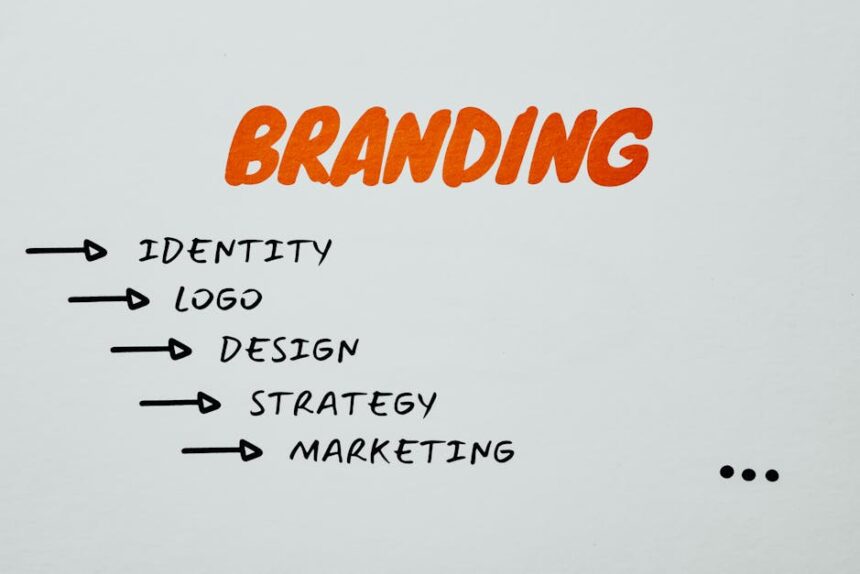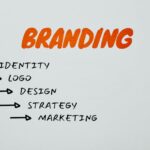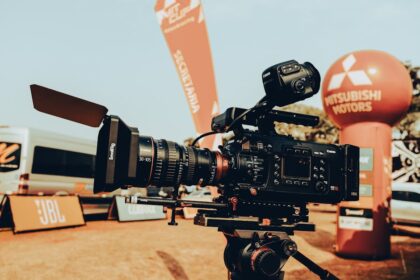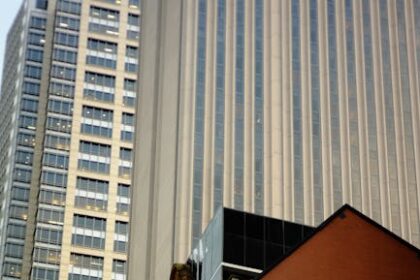Understanding the persistent challenge of ad fatigue is paramount for modern marketers. It represents the point at which an audience, repeatedly exposed to the same creative, begins to tune it out, leading to diminishing returns, increased cost-per-acquisition (CPA), and a negative brand perception. This phenomenon is exacerbated in video advertising due to its immersive nature and the higher cognitive load it demands. Consumers are bombarded with visual content, making novel and compelling creative a non-negotiable requirement. Ignoring ad fatigue risks not just wasted ad spend but also alienating potential customers and eroding brand equity. Recognizing the early warning signs – declining click-through rates (CTR), rising CPMs, reduced conversion rates, and negative sentiment – allows for proactive intervention rather than reactive damage control.
The core principles of combating ad fatigue revolve around novelty, relevance, and deep audience understanding. Novelty isn’t merely about changing a background; it’s about presenting information, value propositions, or emotional appeals in genuinely fresh and unexpected ways. Relevance ensures that despite the novelty, the message resonates deeply with the specific segment of the audience viewing it, making the creative feel tailor-made rather than mass-produced. A profound understanding of the audience’s evolving needs, desires, pain points, and even their media consumption habits informs every creative decision. This means moving beyond generic demographics to psychographics, behavioral data, and journey mapping, anticipating what kind of visual and narrative experiences will capture and retain their attention.
The Infinite Creative Loop: Iterative Testing & Optimization for Continuous Freshness
To perpetually overcome ad fatigue, marketers must adopt an “infinite creative loop” methodology, treating video creative not as a static asset but as a dynamic, evolving organism. This involves continuous testing, data analysis, and rapid iteration.
A/B Testing Beyond Basic Elements: Traditional A/B testing often focuses on headline variations or call-to-action (CTA) button colors. For video creative, A/B testing must delve deeper. Test different opening hooks (first 3-5 seconds), varying narrative structures (problem-solution vs. testimonial vs. lifestyle), diverse music choices, voiceover styles, pacing adjustments, and even subtle shifts in color grading or lighting. Test short-form vs. long-form versions for the same message. Evaluate the impact of different emotional appeals (humor vs. empathy vs. urgency). Each variation, no matter how minor, can provide valuable insights into what resonates and what falls flat. The key is to isolate variables to accurately attribute performance changes.
Multivariate Testing Complex Variables: When the number of variables becomes too large for sequential A/B tests, multivariate testing (MVT) allows for simultaneous testing of multiple combinations of creative elements. For instance, testing three different hooks, two CTAs, and four different background music tracks simultaneously across various audience segments. While MVT requires larger sample sizes and more sophisticated tracking, it can rapidly identify winning combinations and interaction effects between creative elements that single A/B tests might miss. This provides a holistic view of how different creative components work together to influence audience response.
Dynamic Creative Optimization (DCO) Explained: DCO is a powerful strategy for fighting fatigue at scale. It involves creating a library of modular creative assets (e.g., product images, headlines, body copy, background videos, voiceovers) that can be programmatically assembled into countless unique ad variations in real-time. DCO platforms leverage machine learning to determine the optimal combination of these assets for a specific user, based on their browsing history, demographic data, context, and previous interactions. A DCO ad for an e-commerce brand might show a different product to a user who recently viewed it, feature a localized offer, or display a testimonial relevant to their inferred demographic, all within a dynamically assembled video. This ensures hyper-relevance and continuous novelty without manual creative production for every variant.
AI-Driven Creative Insights & Generation: Artificial intelligence is rapidly transforming the creative landscape. AI can analyze vast datasets of past ad performance, identifying patterns and correlations between specific creative attributes (e.g., use of faces, particular color schemes, pacing) and campaign success metrics. This insights can inform future creative briefs, highlighting elements that tend to perform well for specific audiences or objectives. Beyond analysis, generative AI tools are now capable of assisting in content creation, from generating script ideas and storyboard concepts to producing synthetic voiceovers, background music, or even full video clips from text prompts. While human oversight remains crucial for quality and brand alignment, AI can significantly accelerate the ideation and production of diverse creative variations, feeding the infinite creative loop with novel content at an unprecedented pace.
User-Generated Content (UGC) Integration & Curation: UGC is inherently fresh and authentic because it comes directly from the audience. Incorporating UGC into video creative not only provides an endless stream of diverse content but also builds trust and community. Brands can run contests, encourage specific hashtags, or simply monitor social media for relevant content. Curating and repurposing these authentic moments – whether it’s a customer unboxing a product, demonstrating its use, or sharing a personal story related to the brand – adds a layer of genuine social proof that professionally produced ads often lack. When integrated skillfully (e.g., woven into a brand narrative, or used as testimonials), UGC can be a potent antidote to ad fatigue, constantly presenting the brand through the fresh, unfiltered lens of its actual users.
Data-Informed Iteration Cycles: The success of the infinite creative loop hinges on robust data analysis. Establish clear KPIs beyond immediate conversions, including view-through rates, completion rates, brand lift metrics (recall, favorability), and sentiment analysis. Implement a structured feedback loop where performance data from live campaigns is meticulously reviewed by creative teams. This cyclical process involves:
- Hypothesis Generation: Based on past performance or market trends, form a hypothesis about what creative elements might improve results.
- Creative Production: Develop new variations based on the hypothesis.
- Deployment & Testing: Launch the new creative with appropriate testing methodologies.
- Data Analysis: Collect and analyze performance data, comparing it against benchmarks and previous versions.
- Insights & Learning: Derive actionable insights from the data, understanding why certain creatives performed better or worse.
- Iteration: Apply these learnings to the next round of creative development, refining existing concepts or exploring entirely new directions.
This disciplined approach ensures that creative iterations are not arbitrary but data-driven, leading to continuous improvement and sustained freshness.
Audience Segmentation & Hyper-Personalization for Tailored Creative
One of the most effective antidotes to ad fatigue is hyper-personalization, which requires a sophisticated understanding of audience segmentation. A single video creative, no matter how brilliant, cannot resonate equally with everyone.
Deep Demographic and Psychographic Segmentation: Move beyond basic demographics (age, gender, location) to truly understand psychographics – the attitudes, values, interests, and lifestyles of your audience segments. What are their aspirations? What challenges do they face? What are their hobbies? For example, a sports brand might segment by specific sports interests (runners vs. weightlifters), by motivation (competitive vs. wellness), or by lifestyle (urban explorer vs. outdoor adventurer). Each segment can then receive video creative that speaks directly to their unique psychographic profile, using relevant visuals, music, and narrative arcs.
Behavioral Targeting for Creative Variants: Leverage behavioral data to inform creative execution. This includes past purchase history, website browsing behavior, app usage, content consumption patterns, and even ad interaction history. A user who recently abandoned a shopping cart might receive a video ad featuring a different benefit of the product they considered, or a testimonial from a similar customer. Someone who watched a specific product demonstration video on your website might be retargeted with an ad showcasing advanced features or complementary products. Behavioral targeting enables precision in serving the right creative to the right person at the right moment in their journey.
Journey-Based Creative Sequencing: Consumers rarely make immediate purchase decisions. They move through various stages: awareness, consideration, decision, and retention. Video creative should be tailored to each stage. An awareness-stage video might be broad, emotionally evocative, and focus on problem identification. A consideration-stage video might offer detailed product explanations, comparisons, or demonstrations. A decision-stage video could highlight urgency, social proof, or a clear call-to-action. Post-purchase videos could focus on onboarding, upsells, or loyalty programs. Sequencing different video creatives over time, based on where a user is in their journey, prevents repetitive messaging and provides a continuous narrative that builds trust and guides them toward conversion and beyond.
Cultural Nuances in Creative Adaptation: When targeting diverse populations or expanding into new markets, cultural sensitivity and adaptation are critical. This goes beyond simple language translation. It involves understanding local customs, values, humor, taboos, and visual preferences. What is considered engaging or humorous in one culture might be offensive or irrelevant in another. Adapting creative to reflect these nuances – from casting local talent and using culturally relevant settings to adjusting color symbolism and narrative themes – ensures deeper resonance and avoids alienating segments of the audience. Generic, one-size-fits-all creative quickly leads to fatigue in a culturally diverse landscape.
Geo-Targeting Creative Adaptations: Location-based targeting allows for highly specific creative variations. A fast-food chain might run different video ads promoting regional specialties or specific store locations. A retail brand could highlight in-store events or localized promotions in video ads served to users within a certain radius. Geo-targeting extends beyond simple location to include local landmarks, weather conditions (e.g., promoting rain gear during a storm), or local events, making the creative feel immediately relevant and personal to the viewer’s immediate environment.
Language, Tone, and Accent Adjustments: Beyond literal translation, the nuances of language, tone, and accent in voiceovers and on-screen text significantly impact resonance. A playful, informal tone might work for a younger audience, while a more formal, authoritative tone suits a professional B2B audience. Even within the same language, regional accents or dialects can create a stronger connection. For global campaigns, ensuring that voiceovers are not just grammatically correct but also delivered with appropriate cultural intonation and a natural flow is crucial for authenticity and to prevent the perception of generic, mass-produced content.
Content Frameworks for Evergreen Freshness in Video Creative
To maintain perpetual freshness, marketers need a diverse toolkit of content frameworks for their video creative. Relying on a single style or narrative quickly leads to predictability and fatigue.
Problem-Solution Narrative: Reframing Common Issues: This classic framework remains highly effective because it taps into universal human experiences. The “fresh approach” lies in how the problem is framed and how the solution is presented. Instead of simply stating a problem, use vivid storytelling to show the pain point, allowing the audience to deeply empathize. Introduce the solution not as a mere product, but as a transformative experience or a genuine relief. Use relatable scenarios, diverse characters facing common struggles, and compelling visuals that illustrate the before-and-after. Continually explore new facets of the problem or new contexts in which your solution provides value.
Educational/Informative Content: How-To, Explainer Videos, Tutorials: Positioning your brand as a helpful resource builds trust and provides genuine value, making ads less intrusive and more welcome. “How-to” videos demonstrate practical applications of your product or service. Explainer videos simplify complex concepts or elaborate on product features in an easy-to-digest visual format. Tutorials guide users through specific tasks. The freshness comes from continuously identifying new pain points that can be solved with knowledge, breaking down complex topics into bite-sized, engaging segments, and using innovative visual aids (e.g., animated graphics, screen recordings, real-world demonstrations) to make learning enjoyable. This content type subtly positions the brand as an expert and a partner, not just a seller.
Behind-the-Scenes/Authenticity: Humanizing the Brand: In an era of increasing skepticism, transparency and authenticity are powerful antidotes to ad fatigue. Showing the human side of your brand – the people, the processes, the passion – creates a deeper connection. Behind-the-scenes videos can showcase product development, manufacturing processes, team culture, or even the brand’s commitment to sustainability. Founder stories, employee spotlights, and glimpses into daily operations make the brand relatable and trustworthy. This raw, unfiltered content often feels more genuine than highly polished commercials, fostering a sense of connection and loyalty that can withstand repeated exposure.
Testimonials/Social Proof: Diverse Voices, Case Studies: Nothing is more convincing than genuine peer endorsement. Freshness in testimonials comes from diversity in voices, formats, and authenticity. Instead of standard talking-head interviews, feature users in their natural environments, demonstrating the product in real-world scenarios. Use a mix of long-form case studies for in-depth exploration and short, punchy quotes for quick impact. Incorporate user-generated content directly into testimonials. Showcase a wide range of customers – different demographics, different use cases, different levels of experience – to ensure that potential customers see themselves reflected in the success stories, making the social proof more relatable and compelling.
Interactive/Experiential Video: Polls, Quizzes, Choose-Your-Own-Adventure: Moving beyond passive viewing, interactive video actively engages the audience, transforming a monologue into a dialogue. Built-in polls and quizzes allow viewers to test their knowledge or express preferences, providing valuable data. “Choose-your-own-adventure” style videos let viewers navigate different narrative paths, personalizing their viewing experience and fostering deeper engagement. Shoppable videos allow direct purchase from within the ad. While requiring more complex production and platform capabilities, interactive video inherently combats fatigue by giving the viewer agency and a sense of participation, making each viewing unique.
Humor/Entertainment: Brand-Appropriate Lightheartedness: Used judiciously, humor can be an incredibly effective tool for cutting through the noise and making an ad memorable. The key is that the humor must be brand-appropriate and genuinely funny, not forced or offensive. It requires a deep understanding of the audience’s comedic sensibilities. Entertainment-focused content, whether humorous skits, short musical numbers, or visually captivating artistic pieces, creates a positive association with the brand. When an ad is genuinely entertaining, viewers are more likely to watch it repeatedly, share it, and view it as content rather than a mere advertisement, significantly reducing fatigue.
Emotional Storytelling: Tapping into Universal Human Experiences: Storytelling remains the bedrock of compelling video creative. Emotional storytelling goes beyond features and benefits, tapping into universal human experiences like joy, aspiration, fear, connection, or triumph. Freshness comes from finding new angles on these emotions, using unexpected visual metaphors, or focusing on underrepresented narratives. Instead of telling the audience how to feel, show them a story that makes them feel. Whether inspiring, heartwarming, or thought-provoking, emotionally resonant stories create a lasting impact and foster a deeper, more enduring connection with the brand that transcends simple product interest.
Micro-Storytelling: Short, Impactful Narratives: In an attention-scarce environment, the ability to tell a compelling story in 6, 15, or 30 seconds is crucial. Micro-storytelling focuses on a single, powerful message or emotion, delivered with precision and visual impact. This involves stripping away extraneous details and focusing on a strong hook, a clear conflict or desire, and a satisfying resolution (or call to action). Freshness is achieved by continuously experimenting with different micro-narrative arcs, visual shorthand, and rapid pacing to deliver immediate value or intrigue. These bite-sized stories are highly shareable and effective across platforms where short-form video dominates.
User-Generated Content (UGC) Integration: Campaigns, Contests, Curation: As mentioned earlier, UGC is a perpetual source of fresh content. Beyond organic discovery, brands can actively solicit UGC through themed campaigns, contests, or challenges that encourage users to create and share content featuring their products or experiences. This content can then be curated, permissioned, and integrated into official video ads, social media campaigns, or website content. The inherent authenticity and diversity of UGC, combined with the sense of community and participation it fosters, makes it a potent weapon against ad fatigue. It continuously injects new faces, new scenarios, and new perspectives into a brand’s creative assets.
Live Video Elements: Real-Time Engagement and Imperfection: Live video inherently offers freshness due to its unscripted, real-time nature. Live Q&A sessions, product launches, behind-the-scenes tours, or interactive workshops foster a sense of immediacy and authenticity that pre-recorded content cannot replicate. The “imperfections” of live video often enhance its appeal, making the brand feel more human and accessible. Repurposing snippets of engaging live streams into shorter promotional clips can also extend their life, while the original live format always offers a fresh, unrepeatable experience for those who tune in.
Production Techniques for Visual & Auditory Variety
Beyond narrative and audience, the aesthetic and technical execution of video creative plays a massive role in combating fatigue. Varying production techniques keeps the visuals and audio fresh and engaging.
Pacing & Rhythm: Dynamic Cuts, Slow-Motion, Time-Lapses: The speed and flow of a video significantly impact audience attention. Rapid, dynamic cuts can create energy and urgency, ideal for short-form, high-impact ads. Strategic use of slow-motion can emphasize detail, create a sense of awe, or heighten emotional moments. Time-lapses can compress long processes into captivating short sequences, revealing transformations or natural phenomena. Varying the pacing within a single ad, or across a series of ads, prevents monotony. A brand might use fast cuts for an awareness ad, then a slower, more deliberate pace for a detailed product demonstration.
Visual Styles: Animation (2D, 3D, Motion Graphics), Live-Action, Stop-Motion: The chosen visual style dramatically alters the feel and message of a video.
- Live-Action: Offers realism and human connection, perfect for testimonials, lifestyle ads, and authentic storytelling. Freshness comes from varied casting, diverse locations, and dynamic cinematography.
- 2D Animation: Ideal for simplifying complex concepts, creating whimsical or artistic narratives, or achieving a distinct brand aesthetic. It offers limitless creative freedom.
- 3D Animation: Provides depth and realism for product showcases, architectural visualizations, or fantastical worlds. It allows for showcasing products from every angle.
- Motion Graphics: Excellent for explainer videos, data visualization, typography-driven messages, and dynamic title sequences. It combines text, shapes, and movement for impactful communication.
- Stop-Motion: Offers a handcrafted, charming, and often nostalgic feel, particularly effective for showcasing physical products or creating unique brand stories.
Continuously experimenting with and blending these styles can keep a brand’s video output visually exciting and prevent viewers from becoming accustomed to a single aesthetic.
Color Palettes & Lighting: Mood Setting, Brand Consistency with Variation: Color evokes emotion and sets mood. While maintaining brand consistency, explore variations in color palettes and lighting to refresh your creative. A vibrant, high-key lighting scheme might suit an energetic product launch, while a darker, moodier palette with dramatic shadows could enhance a luxury brand’s appeal. Experiment with different color grading techniques – from warm and inviting to cool and modern – to subtly alter the emotional resonance of your videos. Seasonal campaigns or product-specific promotions offer natural opportunities to shift color schemes while remaining within brand guidelines.
Sound Design & Music: Foley, SFX, Evolving Soundtracks, Voiceovers: The auditory experience is as crucial as the visual. Generic stock music or repetitive sound effects contribute significantly to ad fatigue.
- Foley and Sound Effects (SFX): Meticulously crafted sound effects that enhance on-screen actions (e.g., the satisfying click of a product, the crunch of food) add realism and immersion.
- Music: Don’t just pick a single track. Create a library of varying musical styles and moods that align with your brand, and use them strategically. Evolve soundtracks over the course of a campaign or journey stage. Consider custom compositions for unique brand identity.
- Voiceovers: Experiment with different voice talents (male/female, different accents, varying tones – authoritative, warm, energetic). Sometimes, using no voiceover, relying solely on music and visuals, can also be a powerful choice.
Camera Angles & Movement: Drone Shots, POV, Tracking Shots, Handheld: Dynamic cinematography keeps the viewer engaged.
- Drone Shots: Provide breathtaking aerial perspectives, adding scale and grandeur.
- Point-of-View (POV): Places the viewer directly into the action, increasing immersion and empathy.
- Tracking Shots: Smoothly follow subjects, revealing environments or maintaining focus.
- Handheld Shots: Add a sense of realism, urgency, or raw authenticity.
- Static Shots: Can be used for emphasis or to create a contemplative mood.
Varying these techniques, from wide establishing shots to extreme close-ups, creates visual interest and tells the story more effectively, preventing a monotonous, “flat” look.
Typography & On-Screen Graphics: Animated Text, Lower Thirds, Infographics: How text is presented visually can greatly enhance or detract from a video.
- Animated Text: Dynamic text animations can draw attention to key messages, add energy, and reinforce brand personality.
- Lower Thirds: Professional-looking lower thirds for names, titles, or key facts add polish and context.
- Infographics and Data Visualization: Presenting data visually through animated charts, graphs, and icons makes complex information accessible and engaging.
- Kinetic Typography: Where text itself becomes the primary visual element, animating and moving to the rhythm of a voiceover or music.
Freshness comes from innovative motion design, consistent yet varied font usage, and effective integration of on-screen graphics that enhance understanding without distracting.
Talent & Diversity: Casting, Authenticity in Portrayal: The people featured in your ads must resonate with your target audience and reflect the diversity of the real world.
- Diverse Casting: Beyond race and gender, consider age, body type, ability, and lifestyle. This ensures broader relatability and avoids presenting a narrow, idealized version of your customer base.
- Authentic Portrayal: Ensure that talent acts naturally and portrays genuine emotions. Stilted or stereotypical performances quickly lead to disengagement. Using real customers or employees can also boost authenticity.
- Relatable Scenarios: Show people using your product in contexts that your audience recognizes and experiences daily.
Location Scouting & Set Design: Fresh Backdrops and Environments: The environment in which your video is shot significantly impacts its aesthetic and message.
- Varied Locations: Avoid always shooting in the same studio or generic office space. Explore diverse real-world locations – urban landscapes, natural environments, unique interiors – that add visual interest and contextual relevance.
- Set Design: For studio shoots, invest in creative set design that reflects brand personality and product utility. Change props, furniture, and backdrops frequently.
- Virtual Sets: Leveraging green screen technology and virtual production allows for seemingly limitless background variations without the logistical challenges of physical location scouting.
Post-Production Effects: VFX, Grading, Transitions: The magic often happens in post-production.
- Visual Effects (VFX): Subtle VFX can enhance realism (e.g., adding rain, dust) or create fantastical elements that grab attention. Overuse can be distracting, but strategic application can be highly effective.
- Color Grading: This is the process of altering the color of video footage to achieve a specific look or mood. Consistent color grading across a campaign maintains brand feel, but subtle shifts can refresh the aesthetic.
- Transitions: While often overlooked, creative transitions between scenes can smooth flow or add visual flair. Avoid overusing cliché transitions; seek out innovative or custom options.
Aspect Ratios & Platform Optimization: Vertical, Square, Horizontal: Different platforms demand different aspect ratios.
- Horizontal (16:9): Traditional for YouTube, websites, and TV.
- Vertical (9:16): Dominant for TikTok, Instagram Reels, YouTube Shorts, and Stories.
- Square (1:1): Works well across many social feeds, balancing screen space.
Producing video in multiple aspect ratios or optimizing a single piece of content for different orientations ensures maximum impact and native feel on each platform. An ad designed for TV might look out of place on a vertical mobile feed, leading to a quick scroll past. Adapting the creative specifically for each platform’s native format shows attention to detail and enhances user experience, preventing fatigue stemming from poor presentation.
Emerging Technologies & Future Trends for Ad Fatigue Resilience
Looking ahead, several emerging technologies promise even more sophisticated ways to combat ad fatigue by offering novel experiences and scalable personalization.
Generative AI for Creative Concepts & Variants: Beyond just analysis, generative AI, powered by large language and image models, is moving into direct creative generation. Marketers can input prompts describing desired concepts, emotional tones, target audiences, and brand guidelines, and AI can rapidly generate multiple script outlines, storyboard ideas, visual assets, or even short video clips. This significantly reduces the time and cost associated with producing diverse creative variants. AI can also iterate on existing creative, suggesting minor tweaks or wholesale transformations to fight early signs of fatigue. The challenge lies in guiding the AI to produce brand-aligned, high-quality output and ensuring ethical use.
Virtual Production & XR (Extended Reality) Integration: Virtual production, often utilizing LED walls and game engines, allows for real-time creation of immersive, photorealistic environments without physical sets. This means endless possibilities for unique backdrops and scenarios, making it easier to vary visual settings without extensive travel or complex set builds. XR, encompassing Virtual Reality (VR), Augmented Reality (AR), and Mixed Reality (MR), opens doors to truly immersive advertising experiences. AR filters on social media, interactive VR brand experiences, or MR product visualizations in a user’s home (e.g., virtually placing furniture in a room before purchase) offer novel and deeply engaging formats that are inherently resistant to traditional ad fatigue. These are experiences, not just ads.
Programmatic Creative: Automated Content Assembly at Scale: Building on DCO, programmatic creative takes automation a step further. It combines the real-time targeting capabilities of programmatic media buying with AI-driven content assembly and optimization. This means that not only are ads delivered to the right person at the right time, but the creative itself is dynamically generated and optimized for that precise moment and context. The system continuously learns which creative elements and combinations perform best for specific user segments and adjusts accordingly, ensuring maximum relevance and novelty without manual intervention, making continuous content rotation seamless.
Interactive Video Formats: Next-Level Engagement: The evolution of interactive video goes beyond simple polls. Imagine branching narratives where viewer choices dictate the story’s progression, allowing for highly personalized journeys. Shoppable videos will become more sophisticated, offering integrated payment processing and deeper product information. Gamified video experiences where viewers complete challenges or earn rewards introduce an element of play. These formats transform passive consumption into active participation, giving the audience a sense of control and making each interaction unique, thereby dramatically reducing fatigue.
Deepfake/Synthetic Media Ethics & Potential: The ability to generate realistic synthetic media, including “deepfakes” of people or voices, presents both immense potential and significant ethical challenges. While controversial, its controlled and ethical use (e.g., generating multilingual voiceovers from a single original voice, creating realistic avatars for virtual product demonstrations, or even creating synthetic brand ambassadors) could offer unprecedented creative flexibility and personalization at scale. However, transparency, consent, and clear disclosure are paramount to maintain trust and avoid negative backlash. The industry is grappling with how to responsibly leverage this powerful technology.
Metaverse Advertising & Spatial Computing: As the metaverse evolves, advertising within these persistent, shared virtual spaces will require entirely new creative approaches. Spatial computing will allow for advertisements that are not just viewed on a screen but experienced within a 3D environment. This could involve virtual billboards that adapt to viewer proximity, interactive product placement within games, or branded virtual experiences that users can explore. The creative challenge will be to design ads that seamlessly integrate into these immersive worlds, offering value and entertainment rather than disruption, creating novel engagement opportunities that redefine the very concept of advertising.
Operationalizing Freshness: Sustaining the Anti-Fatigue Strategy
Implementing a continuous creative refresh strategy requires more than just good ideas; it demands robust operational structures and a commitment to agility.
Creative Team Structure for Agility: To keep video creative fresh, teams need to be structured for rapid ideation, production, and iteration.
- Dedicated “Refresh” Pods: Consider small, agile creative pods specifically tasked with developing new creative variations and concepts based on performance insights.
- In-house vs. Agency Balance: While agencies can bring external perspectives and specialized skills, an in-house team (or embedded agency personnel) can ensure faster turnaround, deeper brand understanding, and immediate feedback loops.
- Cross-Functional Collaboration: Foster close collaboration between creative teams, media buyers, data analysts, and product teams. Insights from media performance must directly inform creative development, and creative potential needs to be understood by media buyers for optimal placement.
- Specialized Roles: Consider roles like “Creative Strategist” (who bridges data and creative), “Dynamic Creative Producer,” or “AI Creative Specialist” to leverage new technologies and approaches.
Content Calendaring & Asset Management for Variety: Proactive planning is essential.
- Rolling Content Calendar: Instead of fixed quarterly campaigns, adopt a rolling content calendar that schedules continuous creative refreshes, allocating resources for ongoing production of variations.
- Modular Asset Library: Develop a comprehensive, well-tagged digital asset management (DAM) system for all video components (footage, animations, music, voiceovers, graphics). This allows for rapid reassembly and remixing of elements for new variations, significantly speeding up production.
- Themed Content Cycles: Plan for thematic content cycles (e.g., seasonal, holiday, product launch, brand values) to provide a framework for fresh creative, ensuring relevance to current events or marketing pushes.
Rapid Prototyping & Agile Production Workflows: Speed is crucial in combating fatigue.
- Minimum Viable Creative (MVC): Develop and test “minimum viable creative” – simple, low-cost versions of new concepts – to quickly gauge audience response before investing heavily in full production.
- Iterative Design Sprints: Implement agile methodologies, where creative teams work in short “sprints” to brainstorm, produce, test, and analyze new video concepts, allowing for quick pivots based on data.
- Automated Workflows: Leverage tools for automated video editing, transcription, or subtitle generation to streamline production of multiple versions.
Budget Allocation for Creative Refresh and Innovation: Marketers often over-allocate budget to media buying and under-allocate to creative production. This needs to shift.
- Dedicated Creative Innovation Fund: Set aside a portion of the marketing budget specifically for experimenting with new video formats, technologies, or content styles, even if the immediate ROI isn’t clear.
- Cost-Effective Production: Explore cost-effective production methods for generating high volumes of creative variations, such as using stock footage judiciously, leveraging internal teams for raw UGC, or employing AI-assisted production.
- Value of Iteration: Recognize that investing in continuous creative iteration is not a cost, but an investment that prevents wasted media spend on fatigued ads and extends campaign longevity.
Performance Monitoring & Feedback Loops Beyond Direct Response: While conversions are critical, don’t solely rely on them to identify ad fatigue or creative success.
- Early Indicators: Monitor early funnel metrics like view-through rate (VTR), completion rate, engagement rate (likes, shares, comments), and initial click-through rates (CTR) to spot fatigue before it impacts conversions.
- Brand Lift Studies: Regularly conduct brand lift studies to measure shifts in brand awareness, recall, favorability, and purchase intent attributable to video creative.
- Sentiment Analysis: Use tools to analyze comments and social media mentions related to your ads, gauging audience sentiment and identifying negative feedback related to repetitiveness or irrelevance.
- Formal Review Cycles: Establish regular (e.g., weekly or bi-weekly) meetings where creative performance is reviewed by cross-functional teams, insights are shared, and action plans for new creative development are formulated.
Brand Guidelines & Creative Freedom: Balancing Consistency with Innovation: A key challenge is maintaining brand consistency while fostering creative freedom to generate fresh ideas.
- Flexible Guidelines: Develop brand guidelines that provide a strong framework for core identity (logo usage, primary color palette, overall tone) but allow flexibility for creative execution, visual styles, and narrative approaches.
- “Brand Playbook” for Creative: Beyond strict rules, create a “brand playbook” that inspires creative teams, showcasing examples of successful, diverse creative that still feels distinctly “on brand.”
- Empower Creative Teams: Trust and empower creative teams to experiment, innovate, and even occasionally fail. The pursuit of freshness requires pushing boundaries.
- Consistent Core Message, Varied Packaging: The brand’s core value proposition or overarching message can remain consistent, but the “packaging” – the visual story, the emotional appeal, the production style – should be constantly varied to maintain engagement. This ensures that while the audience always understands what your brand stands for, they are never bored by how that message is delivered.











